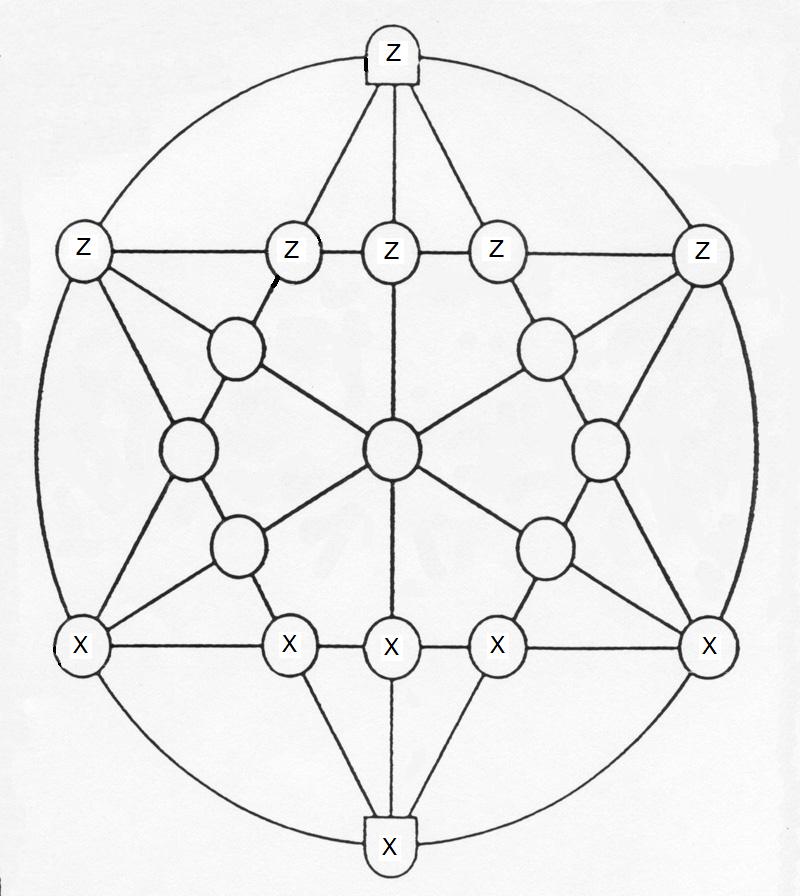In Solomon's Game each player seeks to capture the opponent's pieces and subsequently remove them
from play. Each player begins by placing her or his six pieces - coins or checkers - on the
board as shown in the figure below. The letter X marks the spots occupied at the outset by
one player and Z, those occupied by the opposing player.

The following rules give specific details:
- The first player begins by moving a piece along a line to an adjacent vacant point. Thereafter, each player moves either by sliding a piece to an adjacent vacant position or by making a jump. A jump consists of leaping over an adjacent opposing piece and landing on a vacant spot immediately beyond it on the same line. The jumped piece is captured and removed from the board.
- No piece may move or jump backward, but on each horizontal line pieces may move and jump horizontally.
- If a jump is available, it must be taken.
- Upon reaching the "palace" (represented by the domed rectangular spot) on the opponent's side of the board, a piece becomes a "king." As in checkers, it is crowned and may then move and capture backward as well as forward.
- A player wins when an opponent has lost all her or his pieces or has no legal move available. A draw occurs when each player has only a single king left, neither of which can immediately capture the other, or when players repeat a position until they agree that further play is useless.
- Pieces may not make double jumps.
- Pieces may not move along the curves -- only the lines!
The similarity of Solomon's Game to checkers makes it very easy to learn, yet because of the small number of pieces and playing spaces, the time required to play is much less than for checkers. It proved a very good vehicle for reinforcing reasoning skills, as the students searched for strategies related to the best opening moves and game-ending positions. Although difficult, it is possible for a team of two kings to force a win over a single king.